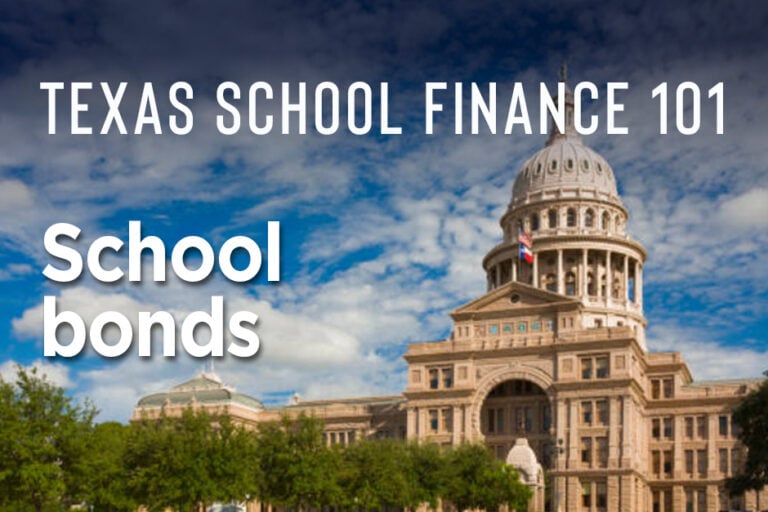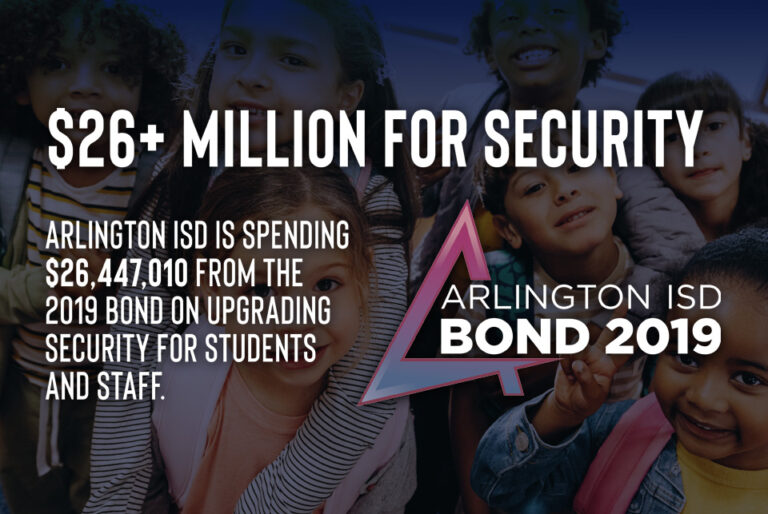
The article below is the sixth in a series designed to give readers insight into the school finance system in Texas. School finance is complicated. But it matters because it affects everything: student learning, teacher pay, school facilities, security, school buses, computers, career and technical opportunities, internet access, sports, fine arts and on and on and on. Ultimately, it affects the future of Texas.
Each article in the series will bite off a small piece of school finance and attempt to give readers a basic understanding of the system in Texas and Arlington ISD. Check back each Wednesday for a new article.
Bonds fund capital needs
If you’ve paid attention to Arlington ISD over the last 10 years, you’ve heard a lot about bonds, particularly the 2014 Bond and the 2019 Bond.
And for good reason. These bonds have funded everything from the construction of the Dan Dipert Career and Technical Center and several new elementary schools to the instruments students use in fine arts at every campus.
But what is a school bond?
A school bond program is a way for school districts to borrow money for capital needs. It’s like a big loan. But before the school district can get the loan, it must first seek voter approval. If voters approve, the district then sells bonds for the amount of money approved by the voters. The district will then have to pay back the bonds – or the loan – over time.
In Arlington ISD, the current 2019 Bond program was approved by voters on Nov. 5, 2019, for $966 million.
Why do school districts need bonds?
The state of Texas sets the amount of revenue that a school district is allowed to receive in a year – the entitlement. But the entitlement simply does not include enough money for many capital needs. Most of the revenue raised by the district each year from property taxes and state aid (check out the article on school district funding) goes to staffing and basic maintenance and operations. There is no money left to build new schools, renovate aging schools, pay for technology, etc.
So, the state of Texas allows school districts to raise money for additional capital needs through a bond.
What can bond funds be used for?
Texas law governs what revenue raised from school bonds may be used for. Texas Education Code §45.001(a)(1) says bonds may be issued for:
“(A) the construction, acquisition, and equipment of school buildings in the district;
(B) the acquisition of property or the refinancing of property financed under a contract entered under Subchapter A, Chapter 271, Local Government Code, regardless of whether payment obligations under the contract are due in the current year or a future
(C) the purchase of the necessary sites for school buildings
(D) the purchase of new school buses
(E) the retrofitting of school buses with emergency, safety, or security equipment and
(F) the purchase or retrofitting of vehicles to be used for emergency, safety, or security purposes.”
In other words, bond funds can only be used for capital expenses. They cannot be used to pay salaries.
In Arlington ISD, the 2014 and 2019 Bonds have been used for four areas: facilities; fine arts; transportation; and safety, security and technology.
How do school districts pay back bonds?
If you read the previous article on property taxes, you know that the local property tax is made up of two separate rates: 1) maintenance and operations (M&O) and 2) interest and sinking (I&S).
The tax revenue raised from the I&S tax rate is strictly used to pay off bond debt.
Defeasance
The district pays back bonds over the life of the assets it purchased with the bond funds. But Arlington ISD also seeks to save money through defeasance of its outstanding bonds.
That sounds confusing, but essentially, defeasance is about adopting methods to save the district money by reducing the district’s debt and achieving savings on the interest rate of the original debt. The district’s chief financial officer and assistant superintendent of financial services consult with the district’s financial advisor to identify opportunities to pay back bonds early and thus limit the amount of interest the district will owe.
For example, in February of 2025, Arlington ISD paid back approximately $277 million of the 2014 Bond program early by refinancing that debt at a lower rate, saving approximately $49 million in debt costs.
Check back next week for an article about what it costs to educate a student.
